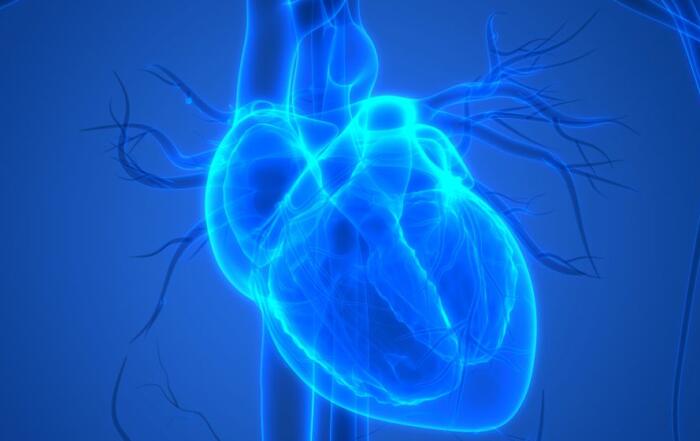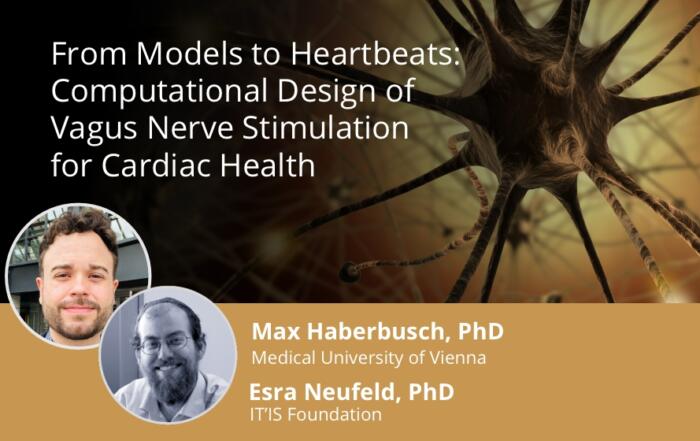In this webinar, Dr. Phil Griffiths provides an overview of rat and mouse telemetry systems offered by ADInstruments, and highlights their benefits and use in a variety of applications.
Highlights
- Telemetry vs. traditional techniques for physiological measurements
- Overview and advantages of Kaha Sciences telemetry
- Telemetry system integration with PowerLab hardware and LabChart software
- Differences between rat and mouse telemetry systems
- Research applications and highlighted publications
Webinar Summary
The Kaha Sciences telemetry systems offered by ADInstruments allow researchers to measure a range of physiological parameters such as cardiovascular pressures, sympathetic nerve activity (SNA), and tissue oxygenation. Herein, Dr. Griffiths discusses these rat and mouse telemetry systems, their advantages over traditional techniques, and research applications.
Traditional techniques for physiological measurements such as acute, invasive recording and tethering are time-consuming and typically require a researcher to be present during the entire experiment. While invasive recordings in anesthetized animals can be valuable, the effect of anesthesia on physiological data must be considered. In tethering experiments, an electrode or blood pressure catheter may be implanted in the animal, externalized at the shoulder blades, and connected to an external transducer or amplifier by a tether. However, these experimental conditions alter behavior and physiological activity by restricting animal movement, leave the animal susceptible to infection, and are prone to artefacts and experimental noise.
Unlike traditional techniques, telemeters are fully implantable, meaning animals are less prone to infection, and minimal daily maintenance is required. Using telemetry, multiple animals can be tested simultaneously, allowing for high data throughput. Animals can also be recorded over weeks or months without the need for the researcher to be present, thus capturing long-term variation in physiological parameters for applications such as aging studies and monitoring disease progression.
“What telemetry offers you is the ability to perform conscious, unrestrained … physiological data collection from your research animals.”
The Kaha Sciences telemetry systems are composed of data receivers (SmartPads and tBases for rat and mouse telemeters, respectively), a configuration system, PowerLab hardware, and LabChart software. Telemetry electronics are continuously powered by SmartPad and tBase data receivers, thus removing the experimental limitation of battery life that is present in other telemetry systems. Each telemeter and data receiver are paired on their own transmission frequency to avoid interference between telemeters. The configuration system allows for full control of telemeter hardware and software, which reduces the effects of handling and stress on the animals since they do not need to be handled at all during experimental setup. Lastly, PowerLab and LabChart are seamlessly integrated in the systems for data acquisition and analysis. Dr. Griffiths provides an example of real-time data acquisition and analysis in this webinar, and highlights that high data quality, resolution, and accuracy are made possible by the systems’ high sampling rate. Further highlighted by Dr. Griffiths is PowerLab C, the newest data acquisition device from ADInstruments which provides simple, reliable, and low latency connection between digital devices.
“The PowerLab C … is really the future of ADInstruments data acquisition.”
Dr. Griffiths next details the advantages of and differences between Kaha Sciences rat and mouse telemetry systems. Rat telemeters from ADInstruments offer the ability to measure physiological pressure through Millar Mikro-Tip solid state pressure sensors. These sensors provide unrivaled long-term accuracy, fidelity, and reproducibility compared to fluid or gel-filled catheters since pressure is recorded directly at the source where the sensor is implanted. Since Millar Mikro-Tip sensors do not require signal transmission through a fluid or gel, frequency response is excellent and signal attenuation over time is mitigated. All rat telemeters from ADInstruments also include a backup battery, which helps facilitate continuous recording in the home cage and sampling up to five meters away from the SmartPad. Alongside physiological pressure and biopotential, the rat telemetry systems can also accurately measure core temperature.
Importantly, ADInstruments offers a cohousing mode for rat telemeters, which improves animal welfare and allows researchers to customize their experiments to maximize data collection from each animal. Cohousing permits researchers to record from two implanted rats in one cage simultaneously or implant two telemeters in one rat if it is heavier than 350 grams. Researchers can also mix-and-match any two of the seven rat telemeters available from ADInstruments and measure up to four signals at once.
“Rats, after all, are a social species and like to be together, and we’ve got a number of customers that have reported changes in the physiological data [of cohoused animals] … compared to singly housed animals.”
Unlike traditional mouse telemetry systems that are limited by battery size, ADInstruments offers battery-free mouse telemeters that receive continuous wireless power from the tBase. Currently, only biopotential recording is available using the mouse telemetry systems; as an example, Dr. Griffiths provides an electrocardiogram (ECG) recording of a mouse that is moving around its home cage. Dr. Griffiths also highlights the benefits of continuous recording to monitor spontaneous activity using an example in which a mouse suffered a myocardial infarction (MI). Continuous recording allowed this researcher to track the MI development over an entire day, including a normal ECG waveform in the morning, ST elevation in the evening, and the point of death.
“With a traditional mouse telemetry system … you might have only taken an hour’s recording sometime in the middle of the day where you would have seen this fairly normal ECG recording. … The following morning, you’d be presented with a dead mouse [and you wouldn’t have] known what happened.”
In the final portion of this webinar, Dr. Griffiths highlights applications of rat and mouse telemetry systems as well as publications from scientists who have used these systems in their research. Kaha Sciences telemetry systems have notably been used in cardiovascular physiology studies, including studies of hypertension, cardiac function, and cardiovascular control. Dr. Griffiths details the use of an arterial pressure/SNA rat telemeter by Squair et al. in the study of the hemodynamics of spinal cord-injured rats; the quality and stability of the data captured over 42 days allowed these researchers to confidently perform automated analysis.
These telemetry systems have also been used to study intracranial pressure (ICP), neuroscience, and tissue oxygenation. Highly stable ICP monitoring was demonstrated by Eftekhari et al., who were able to accurately record low pressure waveforms over 50 days with few movement artefacts. ICP monitoring can also be used in stroke, traumatic brain injury, and intracranial hypertension studies. Stable biopotential monitoring for neuroscience applications was demonstrated by Hill et al. and Jeffreys et al., who both monitored long-term seizure activity in rats using an electroencephalogram (EEG) waveform. The tissue oxygen telemeter from ADInstruments also allows for a unique means of monitoring tissue oxygen in the kidney and brain, which has been demonstrated by Adamovich et al. and Russell et al., respectively. Lastly, Dr. Griffiths highlights the implementation of cohousing protocols by Thakkar et al., who simultaneously measured arterial blood pressure, ICP, renal SNA, and brain tissue oxygen in a rat stroke model.
“Using the cohousing mode to implant these telemeters in … one large rat [allows researchers] to collect as much data as they possibly can.”
In conclusion, Kaha Sciences telemetry systems offered by ADInstruments support long-term, continuous recording of highly accurate data. The high sampling rate available in these systems also provides improved temporal resolution compared to other telemetry systems on the market. The battery-free mouse telemetry systems from ADInstruments allow for long-term data collection that is not possible with other products, while the cohousing mode in rat telemetry systems can refine experiments and allow researchers to maximize their data collection and information extraction.
Click to watch the webinar recording. To view the presentation full screen simply click the square icon located in the bottom-right corner of the video viewer.
Resources
Q&A
- Does the wireless charging of the implants cause the animals to heat up?
- Do the telemetry systems measure temperature?
- Can you lengthen lead wires when reusing EEG/biopotential units?
- Are there any applications for this telemetry in respiratory research?
- To measure left ventricular pressure, where do you need to secure the transmitter?
- Can blood pressure and cerebral spinal fluid pressure at the lumbar level be recorded simultaneously?
- Is cohousing possible with the mouse system?
- Is there a plan to scale up the mouse system to record multiple biopotentials and/or the core temperature?
To retrieve a PDF copy of the presentation, click on the link below the slide player. From this page, click on the “Download” link to retrieve the file.
Presenters
Research Sales Manager - Europe
ADInstruments









